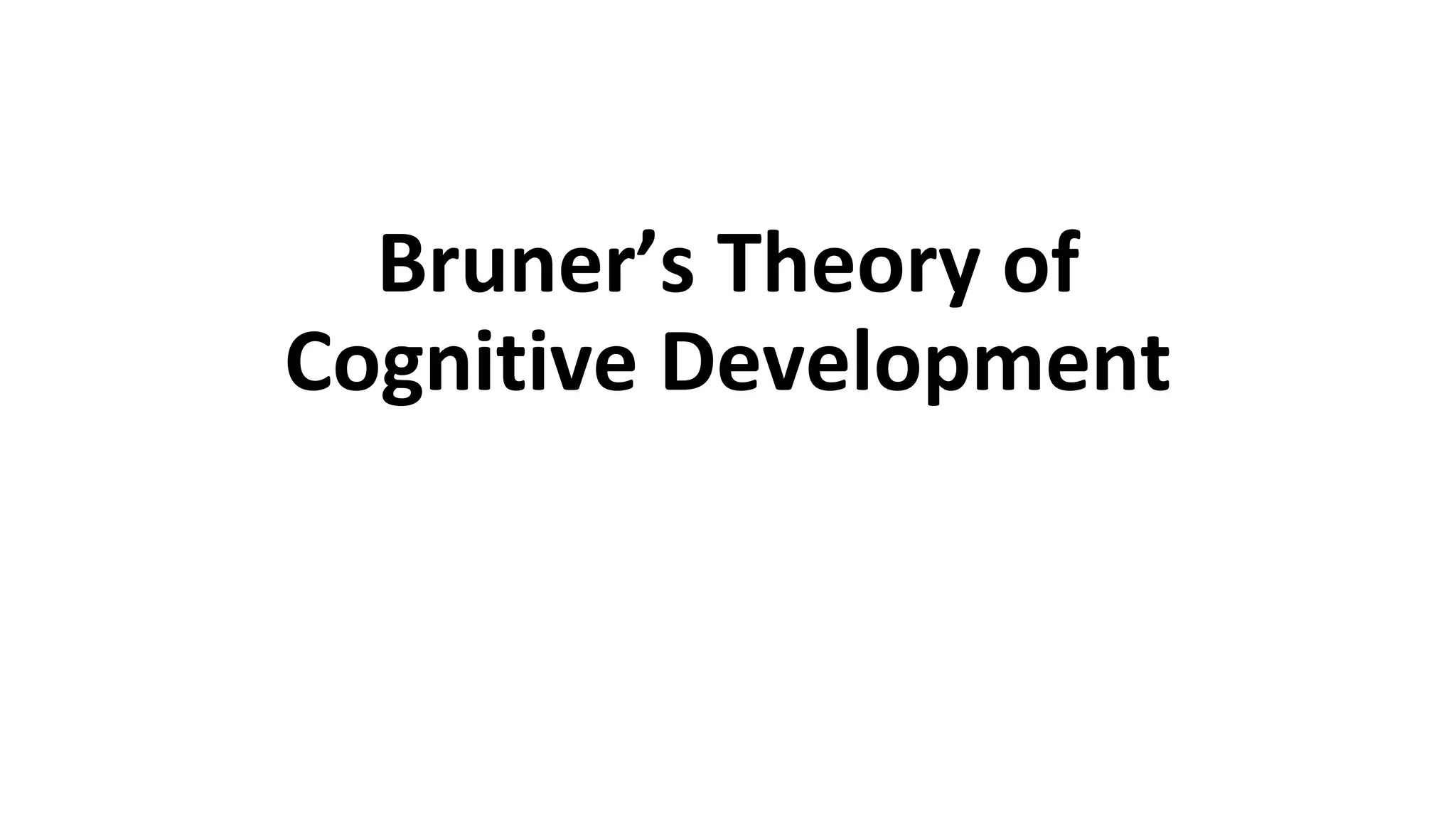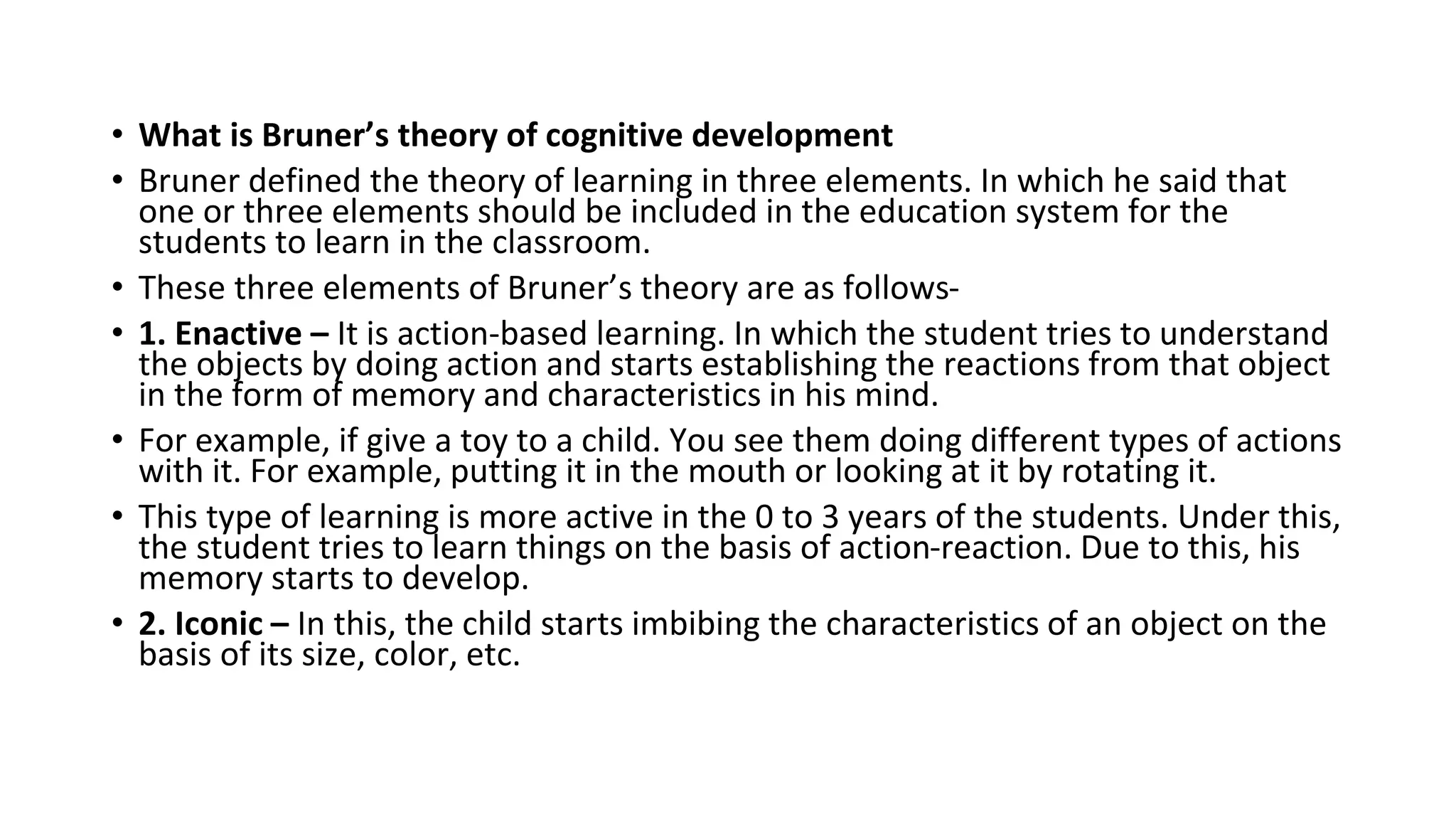Bruner's theory of cognitive development emphasizes three key learning processes: enactive (action-based learning), iconic (visual learning), and symbolic (language-based learning), which evolve as students grow. The theory prioritizes prior knowledge and encourages discovery learning by guiding students from the known to the unknown, enhancing creativity and logical thinking. Bruner's ideas align with Vygotsky's theories, highlighting the importance of social interaction and scaffolding in the learning process.






